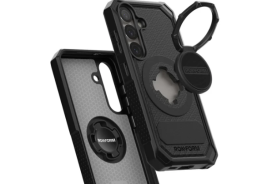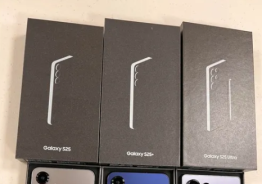SEOUL - Samsung Electronics made a record $5.2 billion profit in the first quarter, overhauling Nokia as the world's top mobile phone seller, and its Galaxy smartphones outstripped Apple's iPhone at the high end of the market.
The South Korean group's handset division shifted more than 20,000 Galaxy phones an hour in the quarter and contributed most of its operating profit.
That company's shares hit a lifetime high after the results, pushing its market value to $190 billion, 11 times that of Japanese rival Sony, though still only a third of Apple's, the world's most valuable company.
Samsung sold 93.5 million handsets in the quarter, more than one in every four sold, according to Strategy Analytics, toppling Nokia from the top spot after 14 years.
The total included 44.5 million smartphones, giving Samsung a 30.6 percent share of the high-end market. Apple's sales of 35.1 million iPhones gave it a 24.1 percent share.
"Samsung and Apple are out-competing most major rivals, and the smartphone market is at risk of becoming a two-horse race," said Neil Mawston, an analyst at Strategy Analytics.
CLSA analyst Matt Evans said in a recent report that "Samsung's smartphone success in the first quarter was the flip-side of Nokia's disappointment."
Nokia, which had long been the leader in the smartphone segment until last year, has suffered a sharp decline in sales since it abandoned its own smartphone operating system and switched to the largely untried Windows Phone. It managed to sell only 12 million smartphones in the first quarter.
The near duopoly in high-end smartphones is unlikely to come under much threat this year or next, according to Bernstein analysts, and Samsung will look to keep that momentum going next week with the launch in London of a third generation of Galaxy S, hoping to boost sales ahead of the summer Olympics, where the group is among the leading sponsors.
"The Galaxy S 3's specifications are expected to be sensational, and it's already drawing strong interest from the market and consumers," said Brian Park, an analyst at Tong Yang Securities.
The new Galaxy will be powered by Samsung's quad-core microprocessor, which the company hopes to see used in handsets sold by Nokia, HTC and Motorola, as well as Apple, its biggest customer for components.
"We anticipate very strong demand for the Galaxy S 3," Robert Yi, Samsung's senior vice president and head of investor relations, told analysts. "When there's strong demand in the market, we don't necessarily need to spend a lot of marketing dollars to promote sales."
While Apple said this week that iPhone 4S sales boosted its quarterly revenue in China five-fold, there are more Samsung handsets than Apple phones in the world's biggest mobile market. Samsung said it increased its China smartphone market share to just above its global average, suggesting it took more than 30 percent share of a market where, unlike Apple, it already has deals with all three big telecoms operators.
Samsung's quarterly handset division profits nearly tripled to 4.27 trillion won ($3.8 billion), accounting for 73 percent of total profit, and operating margins jumped to 18.4 percent from 12 percent in the preceding quarter on strong sales of the Galaxy S and the Note phone/tablet, the surprise consumer hit of recent months.
MOBILE WARNING
In a sign that high-end smartphones are where the mobile action, and money, is, Foxconn International Holdings warned of a deepening first-half loss on weak orders. While its Taiwanese parent assembles iPads and iPhones, Foxconn International mainly puts together handsets for Motorola, Sony and others, indicating a wider gulf between high-end smartphones and other mobile devices.
Samsung, the world's top technology firm by revenue, is also outmuscling Japanese rivals in TVs and memory chips.
January-March operating profit nearly doubled to 5.85 trillion won and was up from 5.3 trillion won in the previous quarter, sending Samsung shares to a life high of 1.38 million won ($1,200). The shares closed up 2.5 percent.
Tong Yang's Park said Samsung's handset earnings growth may slow later this year, with the likely third-quarter launch of Apple's iPhone 5, "but the recovery of chips and displays will more than offset potential drops, sustaining earnings momentum."
Samsung competes with Sony and LG Electronics in TVs, Toshiba and SK hynix in chips and LG Display in flat screens.
THE CHIPS ARE DOWN
Profits from semiconductor sales more than halved to 760 billion won, the lowest in nearly three years, hit by tumbling computer memory chip prices. T h e division also lost some production as Samsung converted a NAND memory chip line to system chips to meet growing demand for mobile processors.
Samsung's TV and home appliance business boosted profits sharply to 530 billion won from a razor-thin 80 billion won a year ago, as it sold more high-end models such as its LED-backlit LCD flat-screen TVs and Internet-enabled sets.
Samsung, the world's biggest TV maker, and local rival LG Electronics are among the few global TV manufacturers making money and winning market share on the back of sleek design, crisp displays and new technologies, such as 3D and organic light emitting display (OLED) sets. Sony, Panasonic and Sharp, Japan's top TV firms, expect to have lost a combined $21 billion in the business year just ended.
Samsung will also merge its Samsung Display liquid crystal display (LCD) unit with its OLED production unit Samsung Mobile Display to create the world's biggest flat-screen producer. The new unit, which will also take in what is left of a dissolved LCD venture with Sony, will launch in July, and Samsung hopes it will shift focus from to OLED from LCD and maintain a lead over Japanese rivals.
Samsung's OLED unit contributed around 400 billion won of profit in the first quarter, more than offsetting losses from the LCD operation. ($1 = 1,141.25 Korean won)
(Additional reporting by Hyunjoo Jin; Editing by Ian Geoghegan and Will Waterman)
Copyright 2020 Thomson Reuters. All rights reserved.
















